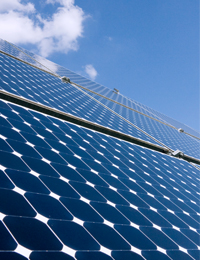Provide latest technology trends and market forecast information that can enhance our customers’ competency by conducting professional industrial research on major growing industries such as rechargeable batteries, electric vehicles, ESS, and new lighting
Report purchase request
- Sales team
070-4006-0265 / 070-4006-1507 / 070-4006-0355
sales@sneresearch.com
-
Battery, EV<2025.2H> Global xEV Market and Battery Supply & Demand Outlook (~2035)_DB ver.
<2025.2H> Global xEV Market and Battery Supply & Demand Outlook (~2035)_DB ver. At the end of last year, Trump returned to office as the new President of the United States. Since his candidacy, Trump had been highly critical of electric vehicle (EV) adoption policies. He even went so far as to label eco-friendly energy policies centered on EVs as a “Green New Scam”. As time passed, in May, resolutions passed by the Republican-controlled House
2025.10.20
Sample Download -
Battery, Energy Storage System<2025.2H> Global ESS Market Outlook (~2035)
<2025.2H> Global ESS Market Outlook (~2035) Tariffs — a word that has become almost unbearable to hear in international trade over the past few months. Trump, back in the U.S. presidential office, has chosen tariffs as the key to international politics in his second administration. His message is clear: if you have complaints, produce goods in America and create jobs at home. In addition, the Trump administration, together with the Repub
2025.09.24
Sample Download -
Battery, Emerging Industry<2025> Battery Degradation Mitigation / Prediction / Diagnosis Technologies and Company Trends (Includes AI-Related Technologies)
<2025> Battery Degradation Mitigation / Prediction / Diagnosis Technologies and Company Trends (Includes AI-Related Technologies)Lithium-ion batteries play a pivotal role across various applications, including electric vehicles (EVs), energy storage systems (ESS), and portable electronic devices. However, the gradual degradation of performance over time remains one of the most critical factors determining battery lifespan, safety, and reliability. Accurately diagnosing and predictin
2025.09.12
Sample Download -
Battery<2025> Technology Status and Market Outlook of All-Solid-State Battery (~2035) – With a Focus on Manufacturing Costs
<2025> Technology Status and Market Outlook of All-Solid-State Battery (~2035)(ASSB Manufacturing Cost and Forecast) As issues related to the stability and energy density of LiBs continue to emerge, the development of next-generation batteries aimed at resolving these challenges is gradually expanding, with all-solid-state batteries receiving the most attention due to their advantages in safety and technological maturity. All-solid-state batteries can be broadly classi
2025.09.10
Sample Download -
Battery, Battery Materials<2025> Cobalt-free Cathode Technology Development Trends and Market Outlook
<2025> Cobalt-free Cathode Technology Development Trends and Market Outlook As the EV and ESS markets grow rapidly, battery demand is surging. However, the nickel–cobalt–manganese (NCM) cathode materials that have been predominantly used so far face a critical issue of high cobalt dependency. From a performance perspective, the main reason for using cobalt in cathode materials is its role in enhancing battery stability and performance. Nevertheless, its price is highl
2025.09.01
Sample Download -
Battery, Emerging Industry<2025> AI-Based Development Strategies for Battery Materials, Cells, Packs, and Recycling
<2025> AI-Based Development Strategies for Battery Materials, Cells, Packs, and Recycling The global battery industry has been experiencing explosive growth driven by the increasing demand for electric vehicles (EVs), energy storage systems (ESS), and mobile devices. However, meeting the conflicting requirements of high energy density, high safety, low cost, and long cycle life simultaneously remains a significant challenge. Traditional battery development has relied on a
2025.08.13
Sample Download -
Battery, EV<2025> Global LIB Mid/Long-term Outlook by Application (~2035)_DB
Smartphones are devices that are already sufficiently distributed worldwide and considered to be in a fully mature market. It is even said that, although limited, smartphones are used in North Korea. But what about the secondary battery market inside them? Significant changes are expected due to variations in the number of cells and anode materials. Foldable phones contain more than two cells. In fact, the recently launched tri-fold phones (foldable phones that fold twice)
2025.08.01
Sample Download -
Battery, EV<2025> Global LIB Mid/Long-term Outlook by Application (~2035)
Smartphones are devices that are already sufficiently distributed worldwide and considered to be in a fully mature market. It is even said that, although limited, smartphones are used in North Korea. But what about the secondary battery market inside them? Significant changes are expected due to variations in the number of cells and anode materials. Foldable phones contain more than two cells. In fact, the recently launched tri-fold phones (foldable phones that fold twice) are
2025.08.01
Sample Download -
Battery, Battery Materials<2025> LIB Electrolyte Solvent Technologies and Market Outlook(~2035)
<2025> LIB Electrolyte Solvent Technology Trend & Market Outlook (~2035) With the global rise of electric vehicles (EVs) and energy storage systems (ESS) as the next-generation energy paradigm, the lithium-ion secondary battery market is undergoing rapid transformation. In particular, solvent technology for electrolytes has emerged as a decisive factor for battery performance, safety, and lifespan, fueling unprecedented competition in research and devel
2025.08.01
Sample Download -
Battery<2025> 4680 Battery Technology Development Trend and Outlook
<2025> 4680 Battery Technology Development Trend and OutlookThe 4680 battery is a large cylindrical lithium-ion cell with a diameter of 46 mm and a length of 80 mm. Since Tesla first unveiled it at its 2020 Battery Day, it has emerged as a symbolic cell form factor leading technological innovation across the global battery and electric vehicle industries. Compared to the existing 2170 and 1865 formats, the 4680 highlights multidimensional advantages such as higher energy density, reduce
2025.07.29
Sample Download


